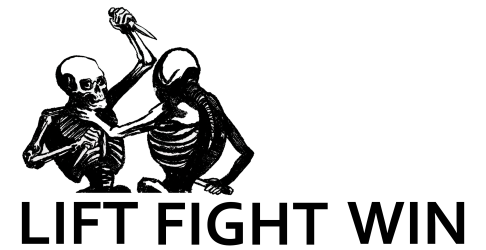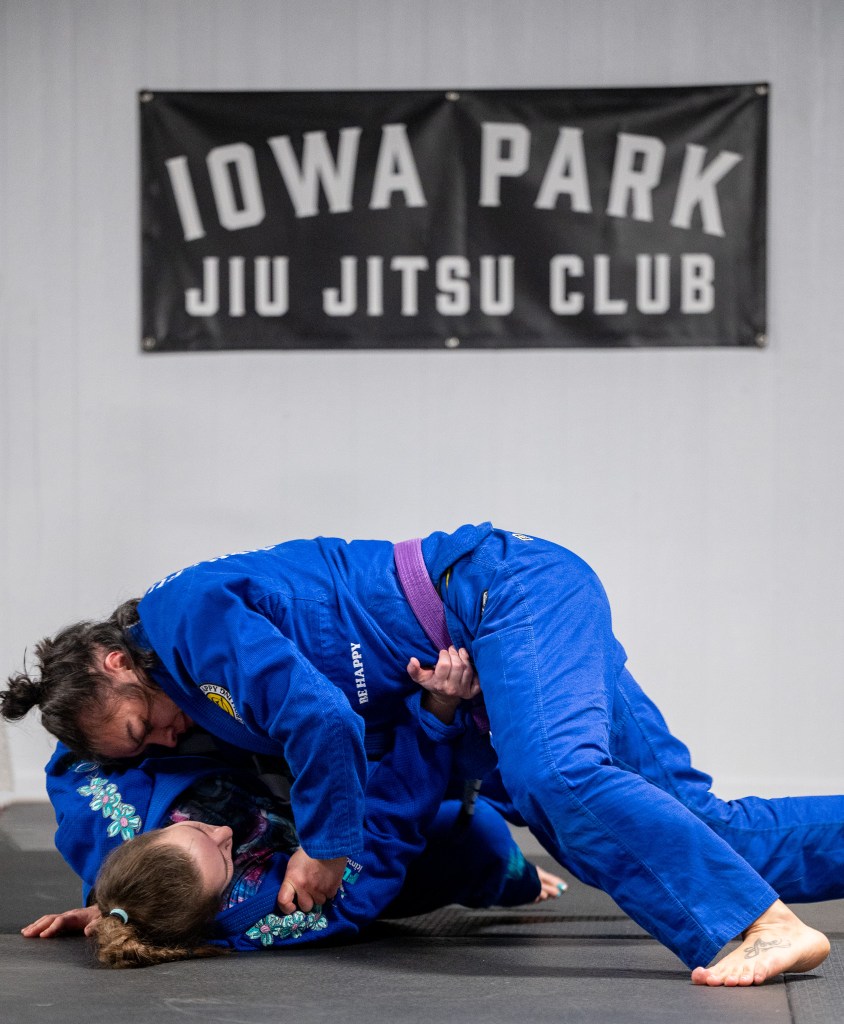At our little club in Iowa Park, TX, we’ve been talking a lot about standards and think it’s important for everyone to have a good idea about where they stand as far as skill goes and what you should be working on at each belt level. BJJ is hard and it can feel like you’re not getting any better for long stretches of time. But that’s the main reason it’s so good for you and so good for teaching you how to fight and for self defense. You test yourself daily against a resisting opponent who does not want you to do what you want to do. And that opponent is also getting better everyday. This is powerful stuff.
So with all that said, here are my thoughts on what you should be working on at each belt level. Thanks very much to John Valentine for his input and for helping me refine some of my ideas on this. If you ever get a chance to train with John, you should jump on the opportunity.
You’ll notice that there are no specific techniques listed (arm bar, triangle, kimura, etc). As you get better and master the components of grappling, you can learn and apply any technique you see. The submissions are actually the least important part of learning BJJ. Position, posture, and control of your opponent are far more important and will determine whether or not you can actually make a submission happen.
Foundational Components of Grappling – Base, Defense, Attack, Pressure, Connection
Base – posture, balance, position
Defense – survival, escape, reverses
Attack – sweeps, control of opponents, setups
Connection – purposeful use of limbs, attachments, and grips
Pressure – active control of an opponent using movement, position, and head control
Proficiencies at each belt to be considered for the next belt.
White Belt
- Base
- Stable
- Maintaining/regaining posture, balance and re-establishing base
- Defense
- Survival position
- Re-establishing neutral
- Attack
- Effectively threatens guard pass
- Holding dominant position
- Connection
- Foundational understanding of using frames and attachments to hold space or position.
- Pressure
- Foundational understanding of creating push/pull energies, head control, and leverage
White belts are ready for promotion to blue belt when they:
- Are able to consistently create and maintain a stable base. When their base is disrupted, they are able to re-establish their base. Higher belts have to set up sweeps and intentionally disrupt posture to advance position.
- Consistently set up a structurally strong survival position when passed, taken down, or otherwise in a compromised position. They exhibit an understanding of how to create space off the survival position and consistently work toward re-establishing a neutral position. Higher belts have to set up submissions, attempt to break down their survival position to get submissions, and have to work to maintain dominant positioning.
- Are able to threaten guard passing effectively on higher belts and pose a reasonable risk of being able to successfully pass.
- Are able to hold dominant positions once established.
This is relatively simple, but getting these concepts down and natural in live rolling takes LOTS of hours on the mats. You’ll be a white belt for about two years with consistent training.
Blue Belt
- Base
- Mobile base
- Re-establish lost position/posture
- Grips
- Defense
- Create space
- Hold space
- Escapes and reverses
- Attack
- Uses grips effectively
- Flows between dominant positions
- Effectively threatens sweeps
- Connection
- Grips, frames, attachments to the opponent transition smoothly
- Feet and hands are used effectively and consistently in all positions
- Pressure
- Uses weight, movement, and head control to disrupt an opponent’s posture and position
- Maintains active use of hip position, chest, and head pressure
Blue belts are ready for promotion to purple belt when they:
- Are able to maintain a structurally strong base in any position while maintaining mobility. They use grips effectively to maintain and improve posture and position. Their base is mobile and reacts naturally to attempts at disruption.
- Are able to consistently create space using hip and shoulder movement, proper positioning, and the use of structurally strong frames. They are able to create and recognize opportunities for escape from bad positions and reversing to dominant positions. They understand which grips are dominant in any given position and prioritize the most dangerous aspect of a given position.
- Use grips in combination with dominant positioning to threaten submissions and sweeps.
- Are able to flow between dominant positions.
Purple Belt
- Base
- Manipulation of opponent’s posture/position
- De-base opponents
- Building a base off single attachments
- Defense
- Strong structural defense in any position
- Consistently reverses to dominant positions
- Attack
- Effectively attacks from all positions (dominant and neutral)
- Forces mistakes and creates opportunities through positioning, movement, and combinations of attacks
- Connection
- Constant, effective connection to opponent using frames, attachments, and grips
- Maintains active use of all limbs in all position as a fundamental aspect of manipulating opponent’s posture and position, and to build effective attacks and defense
- Pressure
- Uses pressure to control an opponent and create opportunities to advance position or attack.
- Pressure in all positions, using movement, limbs, and head to create push or pull at every point of connection
Purple belts are ready for promotion to brown belt when they:
- Are able to consistently manipulate an opponent’s posture and position using good timing and movement. They can effectively take an opponent’s base using position and leverage. They understand the progressive nature of building a base and can do so off of a single attachment to the opponent.
- Are able to flow between defense and offense. The threat of reversing an opponent is always present.
- Can threaten submissions and sweeps from any position. They are able to create opportunities for submissions, sweeps, and reversals using posture, positioning, movement, and leverage. They force mistakes from their opponents consistently.
My opinion on what’s going on at the brown belt and black belt level is probably largely irrelevant, but I think most will agree that the foundations of Jiu Jitsu are learned and refined from white to purple belt. The journey beyond purple belt entails further integrating the foundational components of grappling and developing your own style of Jiu Jitsu.
These concepts are ones I’ve been thinking about for a long time, and they are things I would have liked to have understood much earlier in my time as a practitioner and coach. I hope you find them useful.












